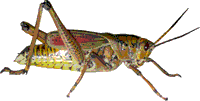Entomology Collections, General

Entomology Papers from Other Sources
Document Type
Article
Date of this Version
4-2015
Citation
ENVIRONMENTAL ENTOMOLOGY (2015) Vol. 44, no. 2, pp. 356-367.
Abstract
Native to Southeast Asia, the spotted wing drosophila, Drosophila suzukii Matsumura (Diptera: Drosophilidae), has become a serious pest of soft-skinned fruit crops since its introduction into North America and Europe in 2008. Current monitoring strategies use baits based on fermentation products; however, to date, no fruit-based volatile blends attractive to this fly have been identified. This is particularly important because females are able to cut into the epicarp of ripening fruit for oviposition. Thus, we conducted studies to: 1) investigate the behavioral responses of adult D. suzukii to volatiles from blueberry, cherry, raspberry, and strawberry fruit extracts; 2) identify the antennally active compounds from the most attractive among the tested extracts (raspberry) using gas chromatography (GC)– mass spectrometry and coupled gas chromatography –electroantennographic detection (GC-EAD); and 3) test a synthetic blend containing the EAD-active compounds identified from raspberry extract on adult attraction. In olfactometer studies, both female and male D. suzukii were attracted to all four fruit extracts. The attractiveness of the fruit extracts ranks as: raspberry >/= strawberry > blueberry >/= cherry. GC analyses showed that the fruit extracts emit distinct volatile compounds. In GC-EAD experiments, 11 raspberry extract volatiles consistently elicited antennal responses in D. suzukii. In choice test bioassays, a synthetic EAD-active blend attracted more D. suzukii than a blank control, but was not as attractive as the raspberry extract. To our knowledge, this is the first report of a behaviorally and antennally active blend of host fruit volatiles attractive to D. suzukii, offering promising opportunities for the development of improved monitoring and behaviourally based management tools.


Comments
U.S. government work.